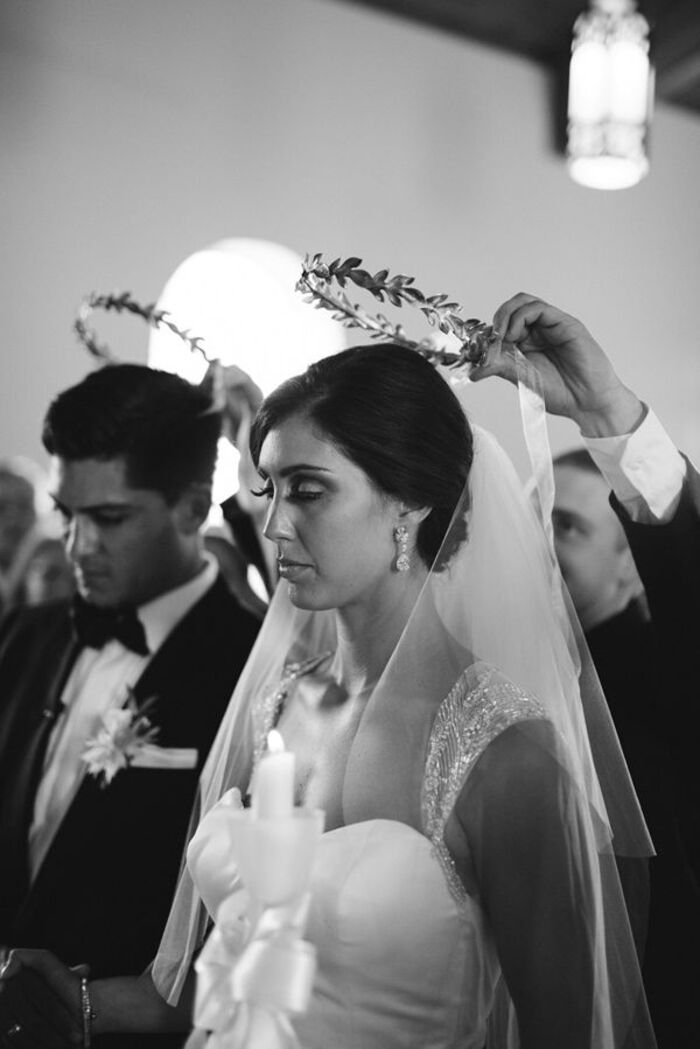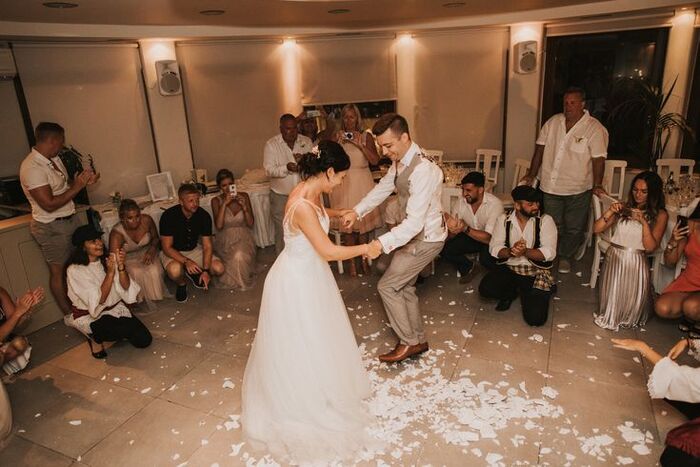Weddings are one of the most beautiful celebrations around the world, and although people gather for the same reason, they are celebrated differently in each country. One country that stands out especially for its vibrant and joyful wedding traditions is Greece. From dancing and food to symbolic rituals, a wedding in Greece is full of cultural significance and festive spirit. The main purpose of a wedding in Greece is not only to unite two people, but also to bring together families and entire communities.
Greek weddings are closely tied to Orthodox Christian traditions, with historic customs dating back centuries. Whether it’s the traditional food, the symbolic crowning ceremony, or the passionate music and dancing, every element has a purpose and a story within a Greek wedding. Guests don’t just watch; they participate, and the celebration often lasts for days.
But Greece isn’t the only country where wedding traditions are rich and meaningful. All over the world, people find beautiful and symbolic ways to celebrate love. Comparing wedding customs in Greece with those in other countries shows not only cultural differences but also shared values such as family, unity, joy, and commitment. These insights can teach us a lot about how different cultures express love and connection.
In this article, we’ll explain some of the most fascinating aspects of a wedding in Greece, such as the cuisine, music, dance, and rituals, and compare them with traditions from other parts of the world. If you’re a curious traveler, a romantic dreamer who wants to get married in true Greek style, or simply someone who enjoys experiencing cultures, join us on this Greek trip!
1. Flower or silver crowns for the bride and groom for your wedding in Greece
In traditional Greek Orthodox weddings, one of the most significant moments is the Stefana ceremony. During this ritual, the priest places wreaths (often made of flowers or silver) on the bride and groom’s heads, joining them with a ribbon. These wreaths symbolize the couple’s unity, the presence of Christ, and the beginning of their shared future.
The couple keeps them as a reminder of their vows and their union. This rite is essential in a Greek wedding. This ceremony has a similar version in Indian weddings, where the couple is joined by a sacred thread or handkerchief during the “Saptapadi” ritual. They walk around the fire seven times, symbolizing their vows. Both cultures emphasize the importance of unity, commitment, and the spiritual blessing of a higher power, although the rituals appear very different.

2. The dishes break!
Smashing plates is a famous Greek tradition often associated with celebrations, especially weddings. This act is loud, dramatic, and joyful. Historically, it was believed to ward off evil spirits or demonstrate wealth by carelessly smashing things. Today, it’s a fun and symbolic gesture to express joy, passion, and the break with the past when two people begin a new life together. It’s a common sight at any wedding in Greece.
This custom has a parallel in Jewish weddings, where a glass is broken underfoot at the end of the ceremony. Although the symbolism is different (because for some people it is a reminder of the destruction of the Temple in Jerusalem), it also marks a dramatic and memorable moment of transition. In both cultures, the act of breaking something becomes a powerful symbol of transformation and remembrance.

3. Guests are given “koufeta”
At a wedding in Greece, it’s customary for guests to receive a small bag of koufeta (candied almonds) as a gift. Almonds represent the bittersweet nature of marriage: sometimes sweet, sometimes hard. They are given in odd numbers, which are indivisible, symbolizing that the couple cannot be divided. These small gifts hold great symbolism and are a cherished part of the wedding.
It’s very similar to the Italian tradition of giving “confetti,” also sugared almonds, during weddings. In France, wedding favors often also include something sweet and symbolic, demonstrating that many cultures use food as a way to express wishes for happiness, unity, and good fortune. These small gestures will be more than meaningful to the new couple.
4. Greek wedding dances (Kalamatianos, Tsamiko)
A wedding in Greece wouldn’t be complete without traditional dances. Kalamatianos and Tsamiko are popular circle dances that symbolize unity and community. The bride and groom typically initiate the dance, which is then joined by the guests, creating a joyful celebration. The music is usually live and energetic, often lasting until the early hours of the morning.
Other cultures also celebrate love through dance. For example, Latin American weddings may feature the “hora loca,” an exciting dance party. At Jewish weddings, the “Hora” is another circle dance in which the couple is elevated on chairs while guests dance around them. These shared moments of dance allow everyone, from young to old, to be part of the celebration.
5. Banquets filled with huge amounts of food
A wedding in Greece is known for its incredible feasts. Dishes like roast lamb, moussaka, dolmades, tzatziki, and baklava fill the tables. The food is rich, flavorful, and meant to be shared. Meals become moments of joy, storytelling, and laughter. Food is not just for eating, but also a symbol of hospitality.
Similarly, at Hungarian weddings, guests are served traditional dishes such as goulash, cakes, and sweet pastries. At Mexican weddings, mole, tamales, and tres leches cake are often served. In every culture, the wedding menu reflects local flavors and traditions, offering guests a taste of the couple’s roots and values.

6. Traditional wedding outfits are a must.
At a wedding in Greece, brides often wear Western-style white dresses, but at rural or traditional ceremonies, they may still wear regional costumes and special jewelry. Grooms may also wear traditional clothing that reflects the history of their area. These outfits honor the past and give the wedding a strong cultural identity.
Many other countries also use traditional attire. For example, at Chinese weddings, brides wear red dresses to symbolize luck and happiness. At Korean weddings, grooms wear hanbok, colorful traditional costumes that have been worn for centuries. Clothing serves as a language of culture, history, and values in ceremonies around the world.
7. The money dance, a must-have!
The money dance is a fun and useful tradition found at many Greek weddings. Guests pin money to the bride and groom as they dance, usually to a cheerful tune. It symbolizes support for the couple’s new life and serves as a gift from the community to help them begin their new life. It is also a moment of celebration and connection between the couple and their guests. It is one of the most anticipated moments at a wedding in Greece.
This tradition also appears elsewhere. At Filipino weddings, the “money dance” also involves pinning banknotes to the couple’s clothing. At some Polish weddings, guests pay to dance with the bride as a way of giving money. In Hungary, they call it the “bride dance,” as they put money or even money in envelopes in a hat to support the couple’s new beginning.
8. Religious ceremony in the Orthodox Church
The religious wedding ceremony in Greece is full of symbolism and beauty. It includes several key rituals, such as crowning, the joining of hands, and the ceremonial walk around the altar. No vows are taken, as they believe actions speak louder than words. The entire service is spiritual and deeply connected to Orthodox Christian beliefs.
This differs from other Christian ceremonies, such as Catholic weddings in Latin America, where vows are exchanged and the ceremony includes readings and blessings. Protestant weddings in Northern Europe can be simpler and shorter. Each religious tradition shapes the wedding with its own sacred symbols, demonstrating how faith and love differ across cultures.

9. In Greece there are also pre-wedding rituals
Before the wedding day in Greece, Greek families often hold pre-wedding rituals. One of the most emotional is when the bride gets ready with her closest family and friends. They help her dress, sing traditional songs, and give her advice or blessings. It’s a time of reflection, support, and love.
This reflects Middle Eastern traditions, where brides celebrate a Henna Night with music, dancing, and symbolic hand designs. In India, the Mehndi ceremony involves applying henna and celebrating with family. These pre-wedding rituals offer the bride an emotional preparation that demonstrates her family’s support and the confidence that she is ready to begin a new phase of her life.
10. A wedding that lasts several days!
A wedding in Greece isn’t usually a one-day event. There are pre-wedding gatherings, the main day, and after-party celebrations. Everyone is invited, from family to neighbors. The atmosphere is warm, joyful, and charming. The idea is that love isn’t private; it should be celebrated together in a large circle.
The same is true in African cultures, where weddings can last several days, with dancing, storytelling, and rituals involving the entire village. Even in rural Latin America, weddings are mass gatherings of entire communities. These traditions demonstrate that marriage is not just between two people, but between families and relatives.
You’ve already seen that Greek wedding traditions, with their vibrant dances, meaningful rituals, and delicious food, offer a beautiful example of how love is celebrated in a way that unites people. These customs are not only about the couple, but about something much bigger: the community.
If you’d like to learn more about wedding traditions from different cultures, don’t miss these articles where we tell you about wedding traditions in Portugal, wedding traditions in Italy, wedding traditions in Spain, and wedding traditions in France.
